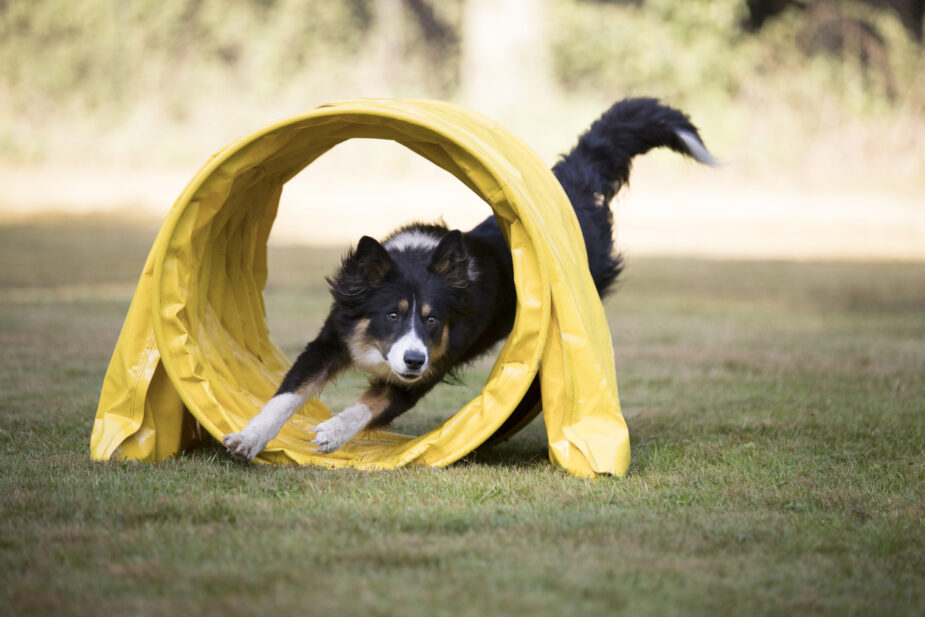At AMSG we believe that our people are more than just their jobs. We celebrate the many fascinating and inspiring things that our people do on their own time. Rebecca “Recca” Bell has found a way to have a closer connection with her furry friends and stay fit at the same time.
Most people would agree that some training is required for dogs. Usually training means the basics – house breaking, sit, stay, leash-walking, maybe rolling over as a fun trick. Others may think of training for specific tasks like dogs working on farms or specialized training for service animals. What a lot of people don’t know is how rewarding and easy it can be to train your dog for Agility, and what a bonding experience it can be!
 Agility is one of the fancy dog sports you’ll see hosted by the American Kennel Club (AKC). In Agility, dogs run with their handler, or partner, who helps direct them to the required events in the agility course: jumps, tunnels, teeters, weave poles, and more. The AKC requires dogs to be purebred and registered with them to enter any of their competitions, but don’t let that deter you! There are other Agility competitions and training facilities that don’t require your pup to be a purebred.
Agility is one of the fancy dog sports you’ll see hosted by the American Kennel Club (AKC). In Agility, dogs run with their handler, or partner, who helps direct them to the required events in the agility course: jumps, tunnels, teeters, weave poles, and more. The AKC requires dogs to be purebred and registered with them to enter any of their competitions, but don’t let that deter you! There are other Agility competitions and training facilities that don’t require your pup to be a purebred.
How is Agility rewarding for both you and your dog? It’s fun! Especially for the dog, and it helps to reinforce other good behaviors. It’s also great exercise for you and your dog. I think I lost 5 pounds my first month doing Agility with my pup, and his muscles, especially in the hind area, became noticeably developed. It’s also very much a bonding experience. Your dog learns to follow your movements, react to commands, keep an eye on you at all times. It’s a great way to fast track that intense bond a lot of dog owners love having with their pet. Eventually your pup may even learn the word “agility” and get excited any time he (or she) hears it, eager to go to his next class or competition.
But every sport has its downsides, even dog sports like Agility. If you don’t go low and slow with your training, your dog can end up with injuries that can be expensive and prohibitive. While it’s impressive to see your dog jump high, that’s not the goal, and any good training program, whether in a class onsite, or one that you take online, will start your dog at lower heights and slower speeds. You wouldn’t start your sports journey without proper experience and build up, why do it to man’s best friend?
There is an age the dogs have to be to start training – usually 10 to 12 months – but with a physical exam that includes x-rays from a trusted vet to check bone growth you may be able to start Agility together sooner. So far there’s no age limit as long as your dog is healthy. My pup has learned alongside 14-year-old dogs just starting out, puppies his own age when he was under a year old, and dogs of all breeds and temperaments. As for us humans, I’ve attended classes alongside women in their 70s, peak-fit firefighters, kids as young as 10, and just about everything in between.
In the end, even if you and your pup never compete, the camaraderie and bond you build with your dog is worth it. The confidence your dog gains as you, and everyone watching, cheer for every jump and high walk is truly amazing. So is the peace you get during the long nap he’ll take after class.
By: Rebecca “Recca” Bell


